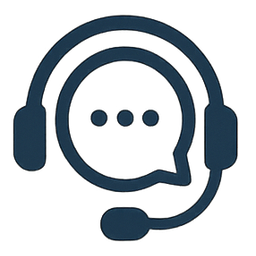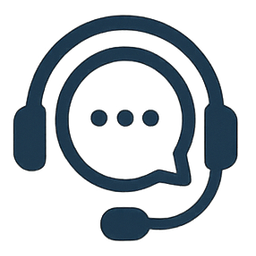
Support teams face a daily battle with ticket backlogs, complex customer issues, and mounting pressure to deliver faster resolutions. The natural response? Adding more tools to the tech stack. Yet this approach often creates new challenges without solving the core problems.
A typical support team might juggle:
- Multiple ticketing systems
- Various chat platforms
- Numerous internal communication tools
- Different knowledge bases
- Separate customer feedback systems
This tool proliferation creates confusion, slows down response times, and leaves support agents scrambling between platforms to find answers. The real solution lies not in acquiring more software but in developing a strategic approach to knowledge management.
A well-crafted knowledge strategy transforms how support teams operate. It centralizes information, streamlines workflows, and empowers agents to resolve issues confidently. By focusing on how information flows through your support ecosystem, you can create a foundation that enhances team efficiency and customer satisfaction without adding unnecessary complexity to your tech stack.
The Limitations of Tool Overload
Support teams often fall into the trap of accumulating multiple tools in their tech stack. A typical support agent might juggle between:
- A ticketing system
- Live chat software
- Internal messaging platforms
- Knowledge base tools
- Customer relationship management systems
- Screen sharing applications
- Project management software
This tool proliferation creates a digital maze where agents spend precious minutes switching between applications rather than solving customer issues. Research shows that employees switch between an average of 35 job-critical applications more than 1,100 times every day.
The reality of tool fatigue hits hard:
- Context switching - Agents lose 2-5 minutes each time they switch tools
- Duplicate data entry - The same information needs to be logged across multiple platforms
- Scattered information - Critical details get buried across different tools
- Increased training time - New agents must learn multiple complex systems
A support agent handling a single customer inquiry might need to:
- Check the ticketing system for customer history
- Open the knowledge base to find solutions
- Switch to messaging to consult colleagues
- Use screen sharing to guide the customer
- Document the interaction across multiple platforms
This constant tool-switching directly impacts response times. When agents spend 15-20% of their time navigating between tools, customer wait times increase and satisfaction scores drop. Your support team's efficiency shouldn't be bottlenecked by the very tools meant to enhance it.
Identifying the Root Cause: Knowledge Gaps
Support teams face a critical challenge that often goes unnoticed: knowledge gaps. These gaps create invisible barriers that slow down issue resolution and frustrate both agents and customers.
A lack of centralized knowledge creates multiple pain points:
- Repetitive Questions: Agents spend valuable time asking colleagues for information that should be readily available
- Inconsistent Solutions: Different team members provide varying answers to the same problem
- Lost Tribal Knowledge: Critical information exists only in specific team members' heads
- Scattered Documentation: Important details spread across multiple platforms, making them hard to find
Knowledge gaps manifest in several recognizable symptoms:
- Response delays while agents search for accurate information
- Increased escalations to senior team members
- Multiple back-and-forth communications with customers
- Missed opportunities to solve issues during first contact
The impact of incomplete or inaccessible information extends beyond immediate support interactions. When agents can't quickly access needed information, they create workarounds or rely on outdated solutions. This leads to:
- Reduced agent confidence in handling complex cases
- Higher stress levels during peak support periods
- Decreased customer trust due to inconsistent answers
- Extended resolution times for common issues
Support teams often experience these knowledge blocks in specific scenarios:
- New Feature Releases: Documentation lags behind product updates
- Technical Requirements: Security protocols lack clear explanation
- Edge Cases: Unique customer scenarios remain undocumented
- Process Changes: Updated workflows not properly communicated
Case Study: Overcoming Security Blocks with a Knowledge Strategy
A recent incident at a mid-sized SaaS company highlights the critical need for a robust knowledge strategy. Users attempting to access their platform encountered unexpected security blocks, receiving cryptic error messages mentioning "Cloudflare Ray IDs" and potential security violations.
The support team faced an immediate surge in tickets, with agents struggling to decode these security triggers. Without proper documentation, each agent approached the problem differently:
- Some advised users to clear their cache
- Others suggested switching browsers
- Many escalated cases to the security team
This scattered approach led to:
"We spent 45 minutes on each ticket trying different solutions, often hitting dead ends. Our average resolution time doubled." - Support Team Lead
The turning point came when the team implemented a structured knowledge strategy:
- Documentation of Common Triggers
- Identified patterns in blocked requests
- Created clear explanations for each security measure
- Mapped specific Ray IDs to corresponding solutions
- Agent Response Templates
- Step-by-step troubleshooting guides
- Clear explanations in customer-friendly language
- Direct links to relevant documentation
The results were significant. The same security blocks that previously caused confusion became manageable issues with clear resolution paths. Average handling time dropped from 45 to 12 minutes, with 80% of cases resolved during first contact.
This case demonstrates how a well-structured knowledge base transforms complex technical barriers into routine support scenarios. The key wasn't adding new tools - it was organizing existing information into accessible, actionable formats that both agents and customers could understand.
 Customer ServiceEmily Carter
Customer ServiceEmily Carter
Building an Effective Knowledge Strategy for Support Teams
A strong knowledge strategy is more than just having tools and documents - it's a structured way of managing, sharing, and using information within your support team. Here's how a real knowledge strategy differs from simply using tools:
Core Components of an Effective Strategy
- Centralized Knowledge Hub: Create a single source of truth where agents can find accurate, up-to-date information
- Standardized Documentation: Implement consistent formatting and structure across all documentation
- Regular Review Cycles: Set up scheduled reviews to keep information current and relevant
- Clear Ownership: Assign dedicated knowledge managers or subject matter experts for different areas
- Feedback Loops: Build channels for agents to report gaps or suggest improvements
Essential Elements for Success
- Real-Time Updates
- Live collaboration features for immediate updates
- Version control to track changes
- Instant notifications for critical updates
- User-Friendly Documentation
- Clear, concise writing style
- Searchable content with relevant tags
- Step-by-step guides with visual aids
- Troubleshooting flowcharts
- Knowledge Base Architecture
- Logical category structure
- Cross-referencing between related articles
- Easy navigation paths
- Mobile-friendly access
Your knowledge strategy should fit smoothly into existing workflows while providing clear guidelines for creating, maintaining, and using content. This organized approach helps support teams shift from solving problems reactively to sharing knowledge proactively.
A well-designed knowledge strategy empowers agents to find answers quickly and independently, reducing the need for multiple tools or constant escalations. By focusing on organizing and making knowledge easily accessible, you lay the groundwork for consistent and efficient support delivery.
Implementing a Knowledge Strategy: Practical Tips for Support Teams
A successful knowledge strategy implementation starts with a lean approach. Start small by identifying your team's most common support scenarios and documenting solutions for these cases first.
Here's a practical roadmap for seamless integration:
1. Map Your Current Workflows
- Document existing processes
- Identify knowledge-sharing touchpoints
- List tools already in use
2. Create Knowledge Champions
- Select experienced team members
- Assign documentation responsibilities
- Set up regular review cycles
3. Build in Small Increments
- Start with top 10 customer issues
- Add new articles weekly
- Update existing content based on feedback
Training Best Practices:
- Schedule micro-learning sessions (15-20 minutes)
- Create quick-reference guides
- Use real support cases for practice
- Implement buddy system for knowledge sharing
Adoption Strategies:
- Set clear expectations for knowledge base usage
- Track article creation and updates
- Recognize top contributors
- Include knowledge sharing in performance metrics
Integration Tips:
- Link knowledge base articles in ticket responses
- Add shortcuts to existing tools
- Create templates with knowledge base references
- Enable quick search from current platforms
Remember to maintain a balance between documentation and action. Your knowledge strategy should enhance existing workflows, not create additional work. Keep articles concise, searchable, and relevant to your team's daily needs.
A simple rating system helps maintain quality - ask agents to rate articles based on usefulness and accuracy. This feedback loop ensures continuous improvement without complex processes.
Measuring Success: The Impact of a Knowledge Strategy on Support Metrics
A data-driven approach helps support teams validate the effectiveness of their knowledge strategy implementation. Here are the essential metrics to track:
Key Performance Indicators (KPIs)
- Average Resolution Time
- First Contact Resolution Rate
- Number of Escalations
- Customer Satisfaction Score (CSAT)
- Knowledge Base Usage Rate
- Agent Confidence Score
Support teams implementing robust knowledge strategies report significant improvements across these metrics. Companies see up to 60% reduction in resolution times when agents have immediate access to accurate, up-to-date information.
 Customer ServiceEmily Carter
Customer ServiceEmily Carter
Agent Performance Metrics
- Reduced time spent searching for information
- Increased number of tickets resolved independently
- Higher consistency in responses
- Improved accuracy in solution delivery
The impact extends beyond numbers. Agents equipped with comprehensive knowledge resources show increased confidence in handling complex issues. This empowerment leads to:
- Proactive problem-solving
- Better customer interactions
- Reduced stress levels
- Higher job satisfaction
Customer Experience Benefits
- Consistent answers across all support channels
- Faster issue resolution
- Reduced need for multiple contacts
- Higher satisfaction rates
Teams tracking these metrics can identify knowledge gaps, optimize their documentation, and continuously refine their strategy based on real performance data. This measurement-focused approach ensures the knowledge strategy remains aligned with both team capabilities and customer needs.
Sign up for Customer Service
The best customer service newsletter !
No spam. Unsubscribe anytime.
Conclusion
The path to exceptional customer support doesn't lie in accumulating more tools - it's rooted in building a robust knowledge strategy. Support teams who shift their focus from tool acquisition to knowledge management create sustainable, scalable solutions that drive real results.
A well-implemented knowledge strategy empowers your support team to:
- Make informed decisions quickly
- Resolve customer issues efficiently
- Build confidence in handling complex cases
- Reduce dependency on multiple tools
Your support team's success depends on their ability to access, understand, and apply knowledge effectively. By investing in a comprehensive knowledge strategy, you create a foundation for continuous improvement and team growth.
The next time you face support challenges, resist the urge to add another tool to your stack. Instead, ask yourself: "How can we better organize and utilize our existing knowledge?" This strategic focus will lead to stronger team performance and improved customer satisfaction.
Remember - the most powerful tool at your disposal isn't a new piece of software - it's your team's collective knowledge, properly organized and readily accessible.
FAQs (Frequently Asked Questions)
Why do support teams need a knowledge strategy instead of more tools ?
Support teams often face challenges like tool overload, which complicates workflows and reduces efficiency. Adding more tools can lead to tool fatigue and slower response times. Instead, a well-crafted knowledge strategy centralizes information, streamlines processes, and empowers agents to resolve issues faster, enhancing overall customer satisfaction.
What are the negative effects of tool overload on support teams ?
Tool overload can cause confusion and inefficiency by forcing support agents to juggle multiple platforms. This leads to longer response times, increased frustration among team members, and ultimately lowers customer satisfaction due to delayed resolutions and inconsistent information delivery.
How do knowledge gaps impact support team performance ?
Knowledge gaps create blockers in issue resolution by causing incomplete or inaccessible information within the team. These gaps result in delays, increased customer frustration, and inefficiencies as agents struggle to find accurate answers quickly. Centralizing knowledge helps eliminate these barriers.
Can you provide an example where a knowledge strategy helped overcome security-related support blocks ?
A case study involving Cloudflare Ray ID security blocks showed that both customers and support agents were confused by triggered security measures. Implementing clear documentation and effective knowledge sharing enabled the team to quickly decode these technical blockers, improving troubleshooting speed and customer experience.
What are the key components of an effective knowledge strategy for support teams ?
An effective knowledge strategy includes a centralized knowledge base with real-time updates, user-friendly documentation, and seamless integration into existing workflows. It focuses on managing information efficiently rather than simply adding more tools, ensuring agents have quick access to accurate data for faster resolutions.
How can support teams successfully implement a knowledge strategy without overwhelming their workflow ?
Support teams should adopt lean implementation practices by integrating the knowledge strategy with existing systems carefully to minimize disruption. Training team members on using the knowledge base effectively and promoting its adoption are crucial steps that ensure smooth transition and maximize the benefits of the strategy.
Related posts
DOSE OF WISDOM IN YOUR INBOX
By signing up for the Customer Service mailing list you will receive exclusive marketing resources, be the first to hear about events, workshops, and have access to subscriber only content!
Written by






